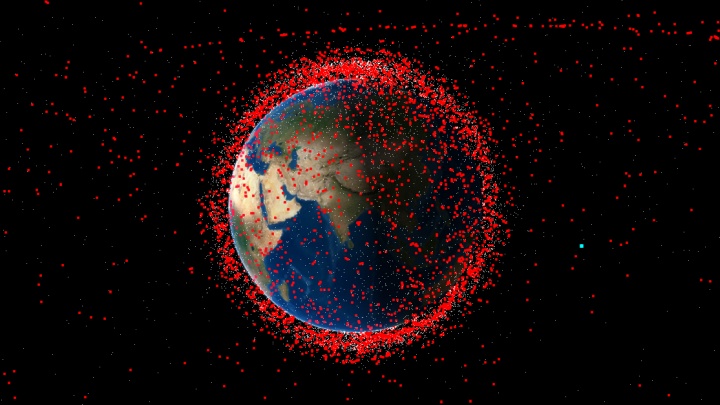„Don't Launch Them” - Starlink Satellites are Bothering Astronomers
SpaceX continues the Starlink program. There are already over 600 satellites in orbit. Meanwhile, many astronomers are voicing their concerns. They claim that the Elon Musk's project may make it harder to explore the space.

- A report from the American Astronomical Society (AAS) warns of the dangers of sending large numbers of new satellites into the orbit;
- This is especially true of the Starlink system, whose clearly visible devices in the night sky have already started bothering photographers and astronomers;
- Currently, many companies are planning to launch their own networks of satellites (their number may reach 100 thousand).
SpaceX has already sent over 600 Starlink satellites into the orbit. The project, which is supposed to provide Internet access even to the most remote places on Earth, stirs more and more controversy. The Satellite Constellations 1 report published by the American Astronomers Society (AAS) raises the issue of the hindrance caused by the Elon Musk's initiative. Astronomers believe that such a large number of visible objects in low Earth orbit (so-called LEO) can affect the exploration of space.
Starlink satellites are visible for some time after sunset. They reflect sunlight, as they are still within its range at the height they orbiting at. The effect is further enhanced by the glossy surface of the first series of satellites. This visual effect is an obstacle for photographers of the night sky. The clearly visible flight lines of Starlink devices in low orbit have already spoiled many shots.
But more importantly, astronomers will be affected by the Starlink network. Already visible flashes (so-called flares) of Iridium satellites have forced them to create systems to predict their trajectory and warn them. The flashes were so clear that they could threaten the telescopes' sensitive optics. And the Iridium system has only 66 devices in orbit. Starlink will eventually take as many as 12,000 of them into the orbit (and SpaceX is considering increasing their number to 42,000).

Currently, there are nearly 2700 active satellites in various orbits. The full implementation of Starlink will add one zero to the amount. And it's important to remember that not only Elon Musk has such plans. Amazon also wants to establish its own network of satellites. The company is going to send more than 3,000 devices into orbit, while OneWeb is going to send as many as 48,000. With such density of objects in the sky, astronomers' fears for further observations are justified. With such a number, it is no longer possible to predict and avoid capturing flights on photographs and images from telescopes.
The report makes some suggestions for dealing with the problem of "littering" in the night sky with satellite flashes. Of course, the first place is the demand not to launch so many devices. This is the only 100% effective way to eliminate the problem. Another way is to limit the reflection of sunlight, e.g. by making the surfaces of satellites from matt light-absorbing materials, using shields or changing their orbital inclination.
A fairly effective way to do this is to send satellites into lower orbits. Because the higher the object orbits above ground, the longer it is visible in the night sky. Above a certain height it can become a bright spot even all night long. This may explain Starlink's orbit being lowered to 550 km above the ground - Musk originally planned to place its satellites much higher.
One of the recommendations in the report is to edit the images of the sky to erase traces of flying devices. But it's probably already an act of desperation. Hopefully, the future will bring better solutions to this problem. Some of the remedies already used by Starlink in the subsequent series have proved effective, limited the brightness of the satellites, although they are still visible.
- Baldur's Gate 3 publisher criticizes Elon Musk's plans. „We don't need another cash grab”
- Do you need to play The Outer Worlds 1 before The Outer Worlds 2? Here's how the connections between RPGs look like
- “It’s better than Wikipedia,” Elon Musk announces Grokipedia 0.1 release, but people are already spotting flaws
0

Author: Arkadiusz Strzala
His adventure in writing began with his own blog and contributing to one of the early forums (in the olden days of Wireless Application Protocol). An electrical engineer by profession, he has a passion for technology, constructing and, of course, playing computer games. He has been a newsman and writer for Gamepressure since April 2020. He specializes in energy and space tech. However, he does not shy away from more relaxed matters every now and then. He loves watching science-fiction movies and car channels on YouTube. He mainly plays on the PC, although he has modest console experience too. He prefers real-time strategies, FPS and all sorts of simulators.
Latest News
- Microsoft failed to make Freelancer 2, so fans decided to create their own sequel. It took them 15 years
- You won't regret hitting “Update” anymore. Valve brings mod revolution to Steam
- Shroud says ARC Raiders devs have lost control. The studio issues a statement
- Bigger than Red Dead Redemption 2? Crimson Desert challenges legends and promises scale that overwhelms
- Lords of the Fallen 2 devs have been accused of copying FromSoftware. „Indispensable evidence” in their defense failed to convince players

